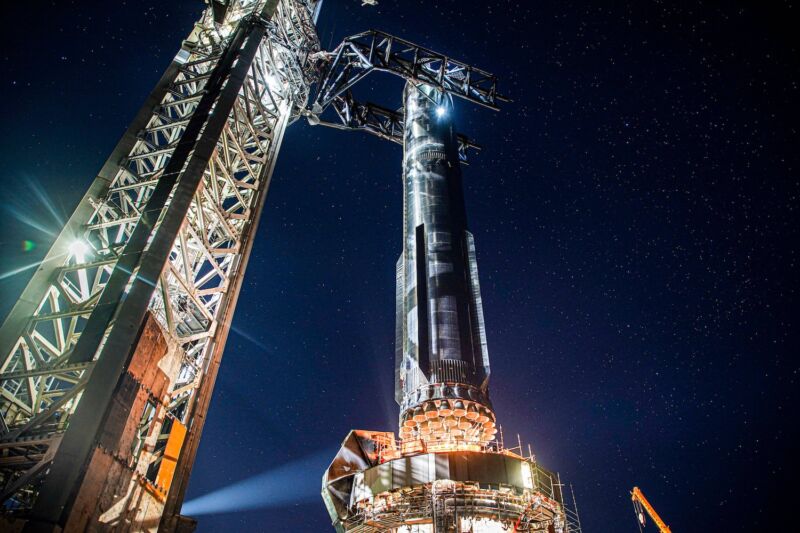
Welcome to Edition 6.04 of the Rocket Report! SpaceX has a Super Heavy booster on the launch pad in Texas a lot sooner than many thought. There was some pretty extensive damage at the launch site in the aftermath of the Starship test launch in April, but SpaceX made quick work with repairs and upgrades to beef up the pad. Meanwhile, SpaceX's Falcon 9 launcher, Rocket Lab's Electron, and China's rocket fleet show no signs of slowing down.
As always, we welcome reader submissions, and if you don't want to miss an issue, please subscribe using the box below (the form will not appear on AMP-enabled versions of the site). Each report will include information on small-, medium-, and heavy-lift rockets as well as a quick look ahead at the next three launches on the calendar.
9 a.m. EDT update: The list of upcoming launches at the bottom of the Rocket Report has been updated to reflect the successful liftoff of the Falcon 9 / Starlink 6-7 mission.

China's Galactic Energy launches sixth successful mission. Galactic Energy, one of several new Chinese startup launch companies, launched its sixth consecutive successful satellite delivery mission on July 22, Space News reports. The company's solid-fueled Ceres 1 rocket lifted off from the Jiuquan launch base in the Gobi Desert with two small satellites on board. Galactic Energy is also developing a medium-lift rocket named Pallas 1 that is designed to eventually be recoverable and reusable.
China's first VLEO satellite ... One of the satellites on Galactic Energy's sixth Ceres 1 rocket was Qiankun-1, developed by a Chinese commercial firm called C-Space. Qiankun-1 was described as China's first Very Low Earth Orbit (VLEO) satellite, aiming to test payloads for hyperspectral imagery, visible light remote sensing, and intelligent image processors. VLEO typically describes a region of space below an altitude of 450 kilometers (280 miles), where atmospheric drag requires spacecraft to regularly maintain their orbit to avoid re-entering the atmosphere. The advantages of VLEO satellites include lower-latency communications and higher-resolution imaging capabilities. (submitted by MarkW98 and Ken the Bin)
China launched three more orbital missions this week. Aside from Galactic Energy, three other Chinese rockets lofted payloads into orbit over the last week. A light-class Kuaizhou 1A rocket operated by Expace launched from Jiuquan on July 20 with four commercial meteorological satellites. Two Long March 2D rockets launched on July 23 and July 26, the first of which deployed a stackable flat-panel broadband satellite for the Chinese company GalaxySpace, among other payloads. The second Long March 2D launch of the week delivered three Chinese military spy satellites into orbit.
31-and-counting for Chinese launches this year ... Chinese rockets have launched 31 orbital missions this year, all successfully. The mission mix so far in 2023 has included many military satellite launches, flights by emerging small satellite launch companies, and a crew and cargo mission to China's Tiangong space station. (submitted by Ken the Bin)
Rocket Lab gearing up to fly again. Less than two weeks since its last mission, Rocket Lab is preparing for another launch of its light-class Electron rocket from New Zealand no earlier than July 30. This mission will carry just one satellite, the first in a new generation of radar remote-sensing platforms built and owned by Capella Space. Rocket Lab will not attempt to recover the Electron's first-stage booster on this mission.
Building up launch cadence ... This launch will be Rocket Lab's eighth mission of the year and 40th overall. At the start of 2023, Rocket Lab founder and CEO Peter Beck said he was targeting as many as 15 flights of the Electron rocket this year. Although the Electron is a small launcher designed to loft just a few hundred kilograms into orbit, it is the second-most flown US orbital launch vehicle since its debut in 2017, following SpaceX's Falcon 9.
reader comments
220 with